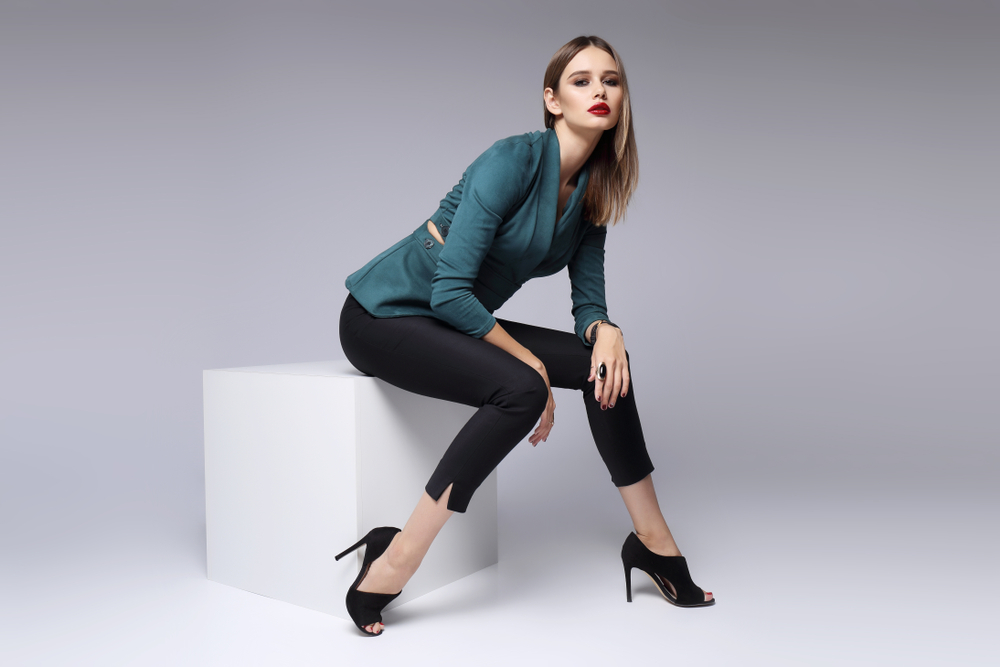
In the world of fashion and photography, modeling plays a pivotal role. Models are not just clothes hangers; they are the living, breathing embodiment of the designer's vision. To bring that vision to life, models must possess exceptional posing skills. Striking a pose might seem like an effortless task, but it requires practice, awareness of one's body, and a strong understanding of the art of modeling. In this article, we will explore some essential tips for mastering the art of modeling and how to strike captivating poses in photoshoots.
1. Know Your Angles:Understanding your angles and how to work them is crucial to modeling (or modelling) . Start by experimenting in front of a mirror and identify your best features. Try different poses, tilting your head at various angles, and positioning your body to accentuate your strengths. Model magazines and online fashion photography portfolios can be great references for exploring different poses and angles.
2. Develop Body Awareness:
Being aware of your body is essential while modeling (by models) . Pay attention to how it feels and moves in different positions. Yoga or dance classes can be excellent exercises to develop body awareness. These activities help to improve flexibility, balance, and overall control over body movement. The more connected you are with your body, the easier it will be to strike dynamic and captivating poses.
3. Practice Facial Expressions:
The face is a powerful tool in modelling . Variations in your facial expressions can convey different emotions and add depth to your images. Practice expressing a range of emotions in front of the mirror, such as happiness, sadness, surprise, and seduction. Remember, your eyes are the windows to your soul, so pay special attention to them. A subtle change in the eyes can make a big difference in the overall impact of a photograph.
4. Use Props and Suggestive Movements:
Incorporating props or suggesting movement can bring life and energy to your poses. Props can be anything from a hat, a chair, or even a flower. Experiment with how you can interact with the prop to create compelling visuals. Similarly, conveying movement through slight gestures or body shifts can add a dynamic touch to your photos. These techniques create a sense of flow and make the photos more visually engaging.
5. Adapt to the Environment:
Adapting to different environments is an essential skill for a model. Whether it is shooting outdoors or in a studio, models must be able to adapt their poses to suit the surroundings. Make use of the location's elements, such as leaning against a wall or interacting with the landscape, to create unique and captivating shots. Adapting also extends to matching the energy of the shoot, whether it is a soft and dreamy editorial or a high-energy sports campaign.
6. Work with Professional Photographers:
Collaborating with professional photographers can provide invaluable guidance and feedback. Experienced photographers have an eye for detail and know which poses work best for different concepts and body types. They can help you find your strengths and guide you to improve your posing technique. Seeking opportunities to work with talented photographers can significantly enhance your modelling (or modeling) skills.
7. Be Confident and Comfortable:
Confidence is key in modeling. When you feel confident and comfortable in your own skin, it reflects in your poses and expressions. Embrace your unique features and celebrate your body. Remember that modeling is an art form that celebrates diversity, so embrace your individuality and let it shine through in your photos.
FAQs:
Q1. How long does it take to master posing in modeling?A1. Mastering posing as a model is a continual process that varies for each individual. It depends on factors such as natural talent, dedication, and the amount of time invested in practice. Consistent practice and seeking feedback from professionals can help accelerate the learning process.
Q2. Are there different posing techniques for different types of modeling?
A2. Yes, different types of modeling require specific posing techniques. For example, editorial modeling often focuses on conveying a story or concept, while commercial modeling requires more relatable and approachable poses. Researching and studying the specific requirements of the modeling genre you are interested in can help you understand and adapt to the needed poses.
Q3. Is it necessary to have professional training to become a successful model?
A3. While professional training can provide valuable skills and insights, it is not a prerequisite for success in the modeling industry. Many successful models have honed their skills through practice and hands-on experience, while others have benefited from professional training. What matters most is dedication, perseverance, and a willingness to continuously learn and grow.
Q4. How can I avoid looking awkward in front of the camera?
A4. Feeling awkward in front of the camera is normal, especially when starting out. To overcome this, practice posing in front of a mirror, take a deep breath, and relax your body. Make sure to communicate with the photographer to understand their vision and any specific instructions. Over time, as you gain confidence and become more comfortable with posing, the feeling of awkwardness will diminish.
Q5. Can I develop my own signature pose as a model?
A5. Absolutely! Developing a signature pose can help you stand out and showcase your unique style. Experiment with different poses and find one that feels natural to you. It could be a particular hand placement, body position, or a signature facial expression. Remember, authenticity is key, so embrace what feels right for you and make it your own.
In conclusion, mastering the art of modeling and striking captivating poses in photoshoots requires practice, body awareness, experimentation, and confidence. By exploring different poses, angles, and facial expressions, and adapting to various environments and concepts, models can elevate their craft and create compelling visual narratives. Remember, each model brings something unique, so embrace your individuality, celebrate it, and let it shine through in your poses and photographs.
Other useful resources
- https://www.planetmodelphoto.com/models/modeling/usa/wilmington/nc-north-carolina
- https://en.wikipedia.org/wiki/Modeling_agency
- https://en.wikipedia.org/wiki/Category:Models_by_modeling_agency